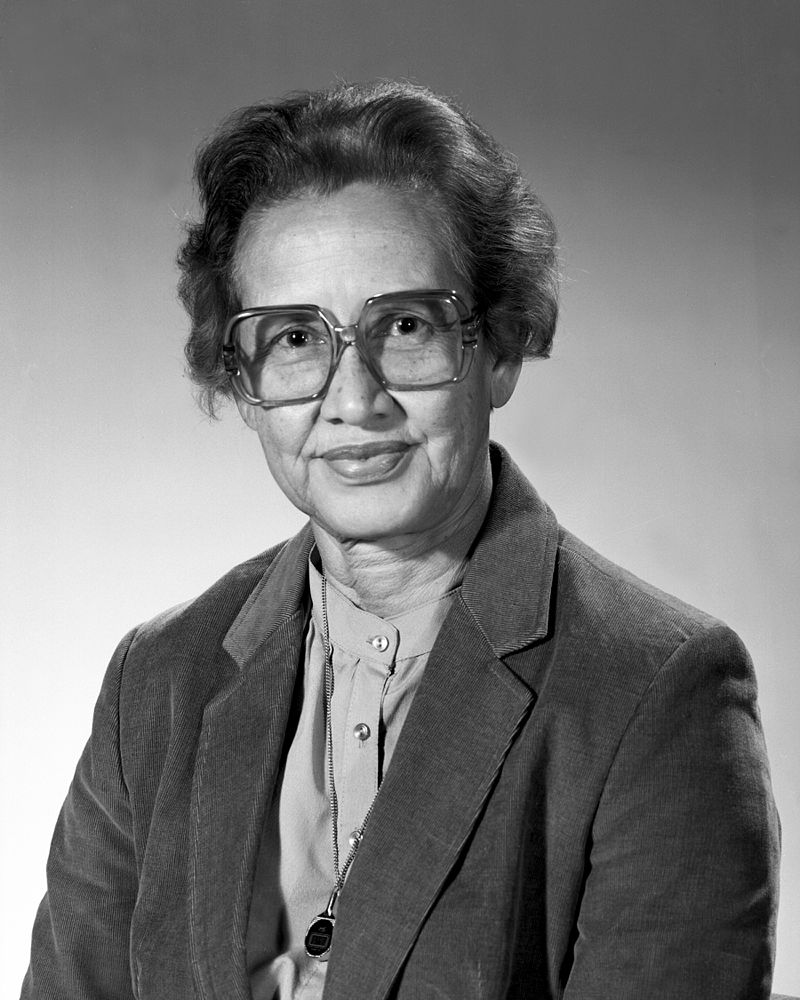Most Intelligent Woman of NASA

Who Was Katherine Johnson?
Katherine Johnson
An African-American mathematician, she worked for NASA from 1953 to 1986. At a time when very few minorities were working in mathematics and science, Katherine entered the field and she was very successful.
She was known as human computers. Katherine was instrumental in sending the first American into space and later hoisting the American flag on the moon. She was an expert in determining the routes for spacecraft.
Early Life and Education.
Katherine Loved to count things from the beginning.She counted everything, from the house to the road, from the road to the church. She counted the utensils in the house. She counted whatever was more than one.
Katherine Born in White Sulfur Springs City on August 26, 1918. She was the youngest of four siblings. Her mother was a teacher and her father was a farmer. She also worked in a hotel. The only wish of Katherine was when she would grow up and when she would go to school like her other siblings. Finally the days of her going to school came. Given her abilities, she was admitted in grade two. And she was only ten years old when she reached high school.
After graduating at the age of fourteen Katherine got admission in historically black college. As a student, she attended every math course in college. She was mentored by many college professors, including W. W. Schieffelin Claytor.
W. W. Schieffelin Claytor was the third African-American to do a Ph.D. in mathematics. Claytor added new math courses only for Katherine.
Claytor recognized her interest in mathematics and her quest and made it clear that
"You will one day become a very famous mathematician."
At age 18, Katherine got degree in mathematics and French with very high marks.
It was very unusual for a woman to have a degree in mathematics.
But at the time, it was difficult for any African-American to get a job in science. By that time Katherine had no choice but to teach. She did it for many years at Black Public School.
She left teaching in 1939 after marrying her first husband, James Goble.
She took admission in Graduate Math Program but a year later, when she became pregnant, she gave up everything and focused on her family. She was the first African-American woman to attend a graduate school at the University of West Virginia in Morgantown, West Virginia.
How Did She Get to NASA?
When Katherine was 34 years old she applied for a job in National Advisory Committee for Aeronautics, or NACA.
NACA,It was the name of a government institution that later became NASA.
In the early to mid-1950s, NACA was just beginning its work on studying space.
Katherine When applied for the first time, all jobs were already filled. She was disappointed, but she did not give up. She applied the following year, at which point the agency offered her a job. Katherine had the opportunity to work with a large group of women who were similarly skilled in their work.
What did Katherine do for NASA?
Katherine,Along with other women worked on math But she just didn't want to work. She wanted answers to questions like "why" and "how". The quest to learn more in her field opened new doors of research and knowledge for her. Women were not allowed to sit in meetings with male engineers and scientists. She wanted to go to these meetings so that she could learn more about different projects. She soon became famous for her work and skills and was allowed to work with men. After that to solve many problems, men Had to rely on Katherine and She was recognized as a group leader. In 1958, NACA officially became NASA. Shortly after that,
Katherine Also became part of the space team.
In 1961, Katherine began navigating space to send the first American astronaut into space.
This American astronaut was Alan Shepard.
The engineers knew when and where they wanted Shepard's space capsule to land, but the tricky part was to calculate when and where the rocket would have to launch. Katherine Johnson figured it out! And in February 1962, her calculations helped put the first American into orbit around Earth. His name was John Glenn.
In September 1962, President John F. Kennedy announced a mission to the moon.
Sending a man to the moon required the same calculations as when sending a man into orbit. But it was more difficult than before.
The mission involved three people who left the earth for the moon. Two people landed on the moon and after landing, all three successfully returned to Earth.
She worked with the NASA team to figure out where and when the rocket needed to be launched to put it on the right path to land on the Moon. Once again, Katherine’s calculations were instrumental in NASA’s success. With the information she provided, astronauts walked on the Moon for the first time on July 20, 1969. They returned safely to Earth on July 24, 1969. All of this happened, in part, because of Katherine and her love of mathematics.
In 2016, NASA also released a video in which they said that Katherine Johnson calculations
Proved to be very important for start of
Apollo Moon landing program and Space Shuttle program.
What Did She Do After NASA?
Katherine retired from NASA in 1986.
In 2016, she received honorary doctorates in science from West Virginia University and West Virginia State University.
After retirement, she enjoyed traveling, playing card games, and spending time with family and friends. She also loved talking to students about school. She told the students to keep studying and work hard. It encouraged students to learn more about math and science.
This great lady passed away on February 24, 2020 at the age of one hundred and one.
NASA administrator Jim Bridenstine at the time of her death
Called him an "American hero" and said his services were unforgettable.
Awards
1971, 1980, 1984, 1985, 1986: NASA Langley Research Center Special Achievement award [56]
1977, NASA Group Achievement Award presented to the Lunar Spacecraft and Operations team - for pioneering work in the field of navigation supporting the spacecraft that orbited and mapped the Moon in preparation for the Apollo program.
1998, Honorary Doctor of Laws, from SUNY Farmingdale.
1999, West Virginia State College Outstanding Alumnus of the Year.
2006, Honorary Doctor of Science by Capitol College, Laurel, Maryland.
2010, Honorary Doctorate of Science from Old Dominion University, Norfolk, Virginia.
2014, De Pizan Honor from National Women's History Museum.
2015, NCWIT Pioneer in Tech Award.
2015, Presidential Medal of Freedom.
2016, Silver Snoopy award from Leland Melvin.
2016, Astronomical Society of the Pacific's Arthur B.C. Walker II Award.
2016, Presidential Honorary Doctorate of Humane Letters from West Virginia University, Morgantown, West Virginia.
On December 1, 2016, Johnson received the Langley West Computing Unit NASA Group Achievement Award at a reception at the Virginia Air and Space Center. Other awardees included her colleagues, Dorothy Vaughan and Mary Jackson.
2017, Daughters of the American Revolution (DAR) Medal of Honor.
2017 Honorary Doctorate from Spelman College.
May 12, 2018, Honorary Doctorate of Science from the College of William & Mary, Williamsburg, Virginia.
On April 29, 2019, the University of Johannesburg and its Faculty of Science conferred Johnson with the degree of Philosophiae Doctor Honoris causa for her pioneering role at NASA.
November 8, 2019, Congressional Gold Medal.

 My First News Item
My First News Item My Nine News Item
My Nine News Item